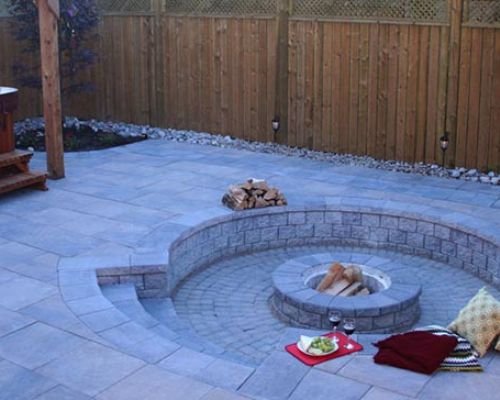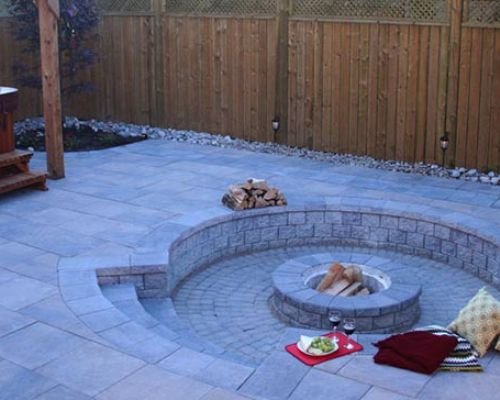Feet silently carry us through life’s daily demands, yet misidentifying conditions like plantar warts and corns can turn simple discomfort into ongoing pain. Are these common foot issues truly understood? While both develop on the soles of the feet and cause pain, their origins are worlds apart—warts are viral infections, marked by rough bumps with black dots, whereas corns are thickened skin from friction, appearing smooth and shiny. Confusing them can lead to ineffective treatments, prolonging suffering. Proper diagnosis, often by a healthcare professional, is crucial for targeted, effective care—from home remedies to advanced procedures like cryotherapy. Preventative habits such as supportive footwear, good hygiene, and early detection hold the key to long-term foot health. Could recognizing these subtle differences and embracing proactive care be the difference between persistent pain and lasting relief? Your feet’s health is a window to overall well-being—how will you protect it?
Uncovering Foot Discomfort: The Hidden World of Plantar Warts and Corns
Feet often go unnoticed until something starts to hurt. We rely on them daily for walking, standing, and even balancing, yet few of us pay close attention to small issues that can gradually develop. Conditions like calluses, corns, plantar warts, and bunions often sneak in quietly, causing discomfort only when they become more noticeable. Recognizing these problems early makes a big difference in managing pain and preventing more serious complications down the line.
Two common foot issues that frequently cause confusion are plantar warts and corns. They both tend to appear on the soles of the feet and can cause pain when walking or standing for extended periods. However, their causes and appearances are quite different, which means they require distinct treatment approaches. Understanding what sets them apart is essential for effective care.
Plantar warts are caused by the human papillomavirus (HPV). The virus enters the skin through tiny cuts or cracks, leading to rough, grainy growths that often have small black dots—clotted blood vessels—at their center. These growths can be flat or raised, depending on the pressure exerted during walking. Warts tend to spread or multiply if left untreated, especially in crowded environments like gyms or pools.
Corns, on the other hand, develop due to repeated friction and pressure—often from poorly fitting shoes or abnormal walking patterns. They are thickened patches of skin that form as a protective response over bony areas or where shoes rub excessively. Unlike warts, corns don’t have black dots and tend to look smooth, dense, and shiny, often forming a rounded shape. They usually cause discomfort when pressure is applied, especially during prolonged standing or walking.
While both conditions can cause similar types of foot pain, their origins are distinct. Warts are viral infections that may require treatments like freezing or medicated patches, whereas corns respond better to pressure relief, padding, and better footwear. Misdiagnosing a wart as a corn—or vice versa—can lead to ineffective remedies and ongoing discomfort.
Getting an accurate diagnosis from a healthcare professional is crucial. A podiatrist or dermatologist can examine the growths, confirm whether it’s a wart or a corn, and recommend the most appropriate treatment plan. Correct identification not only speeds up recovery but also helps prevent the problem from recurring.
Being aware of these differences empowers you to take better care of your feet. Early recognition and proper treatment can keep minor issues from escalating into painful, persistent problems. Your feet carry you through life—giving them the right attention now can make all the difference in staying comfortable and mobile for years to come.
Foot Problems Unveiled: Causes, Symptoms, and Prevention
Foot problems are incredibly common and can affect people of all ages, from children to seniors. Often, issues develop gradually, with subtle changes like thickened patches or bumps that are easy to overlook until they cause discomfort. Without proper attention, these minor problems can worsen, leading to pain and difficulty walking or standing for extended periods.
Many foot conditions are linked to footwear choices. Shoes that are too tight, too loose, or lack adequate support create friction and pressure points that encourage the formation of calluses and corns. Repeated rubbing over bony prominences or under the toes prompts the skin to thicken as a protective response. At the same time, this friction can cause small cracks or cuts that allow viruses like HPV to enter, resulting in plantar warts.
Symptoms vary depending on the specific condition but often include thickened skin, bumps, or tender areas. Corns appear as dense, shiny, rounded patches, typically over areas where shoes rub against the skin. Calluses tend to be larger and less defined but share a similar thickened texture. Warts usually present as rough, grainy growths with tiny black dots, which are clotted blood vessels—an identifying feature. They can be tender, especially when pressure is applied, making walking uncomfortable.
Hygiene plays a key role in foot health. Keeping feet clean and dry helps prevent infections and the spread of viruses like HPV. Walking barefoot in communal spaces such as gyms or pools increases exposure to infectious agents, so wearing protective footwear is recommended. Maintaining a healthy weight and choosing supportive shoes reduces pressure on your feet, minimizing the risk of developing these issues.
While some foot problems resolve with basic care, persistent growths, ongoing pain, or changes in appearance should prompt a visit to a healthcare professional. Proper diagnosis is essential to determine whether you’re dealing with a wart, corn, callus, or other condition. This ensures you receive the most effective treatment—be it topical remedies, professional removal, or pressure management—preventing further complications.
Understanding the causes and symptoms of common foot issues helps you respond early and effectively. Regular inspections, good hygiene, and supportive footwear set the foundation for long-term foot health. When problems do arise, seeking professional advice ensures you’re taking the right steps toward relief, keeping your feet healthy and pain-free for years to come.
Distinguishing Warts from Corns: Key Differences for Effective Care
The main differences between plantar warts and corns lie in their causes and how they appear on the foot. Warts are caused by a viral infection—specifically the human papillomavirus (HPV)—which enters through tiny cuts or cracks in the skin. Once inside, the virus triggers the growth of rough, grainy bumps that often have small black dots in the center, which are clotted blood vessels. These growths typically appear on pressure points like the heel or ball of the foot and can be tender or painful when pressed, especially under weight.
Corns develop as a response to repeated friction and pressure, usually from ill-fitting shoes or abnormal walking habits. They form as thickened patches of skin that serve to protect the underlying tissue from continuous rubbing. Unlike warts, corns don’t have black dots, and their surface tends to be smooth, dense, and shiny. They are usually rounded and tend to be located over bony prominences or areas where shoes cause consistent friction. The discomfort from corns is often felt as a hard, localized ache, especially after long periods of standing or walking.
Visually, these two conditions are quite distinct. Warts often look like rough, uneven bumps with a cauliflower-like texture and tiny black dots, which are characteristic signs of a viral infection. Corns, on the other hand, are more uniform, with a shiny, dense appearance that forms a rounded or conical shape. Feeling them can also help differentiate—warts tend to be tender when pressed, while corns feel hard and may cause soreness only when subjected to pressure.
Treatment approaches differ significantly. Warts usually require methods that target the virus directly, such as freezing therapy (cryotherapy), medicated patches, or topical acids designed to destroy infected tissue. Corns respond better to pressure relief—using padding, orthotics, or supportive footwear—and over-the-counter remedies like salicylic acid to soften and gradually peel away the thickened skin. Trying to treat a wart as a corn, or vice versa, often results in ineffective care or irritation.
Misdiagnosing a wart as a corn—or the other way around—can lead to ongoing discomfort and delayed healing. Warts won’t respond to treatments meant for corns, and vice versa, which is why expert evaluation is essential. A healthcare professional can accurately identify the growth, confirm whether it’s viral or mechanical, and recommend the most effective treatment plan. Proper diagnosis ensures faster relief and reduces the chances of recurrence.
Knowing these key differences helps you manage foot growths more effectively. Recognizing a viral wart from a callus or corn saves time, prevents unnecessary treatments, and promotes better foot health. When in doubt, consulting a specialist is the best way to ensure you’re taking the right steps toward comfortable, healthy feet.
Understanding these differences underscores the importance of proper diagnosis and tailored treatment. If you suspect you have a wart or a corn, seeking professional advice can ensure you receive the most effective care. For more detailed information on treatment options and when to see a specialist, you can explore our comprehensive guide on foot wart treatment.
Practical Strategies for Managing Foot Growths and Preventing Recurrence
Managing foot growths like plantar warts and corns effectively starts with simple, consistent habits. Keeping your feet clean and dry is fundamental; bacteria and viruses thrive in moist environments, so daily washing and thorough drying can help prevent infections and minimize the risk of developing or worsening these conditions. Wearing shoes that fit well and provide adequate support is equally important. Ill-fitting footwear often causes friction and pressure, which can lead to corns or exacerbate existing ones. Supporting your feet with proper shoes reduces the mechanical stress that prompts skin thickening or viral growths.
When dealing with minor issues, over-the-counter remedies can be useful. Salicylic acid pads or gels are effective for softening corns and encouraging the gradual peeling away of thickened skin. Applying these products carefully and following package instructions can provide relief without the need for professional help. For plantar warts, topical salicylic acid treatments or medicated patches are available, but patience is key, as these treatments often take weeks to show results. Avoid aggressive removal methods at home, especially if you’re unsure about the diagnosis, to prevent damaging healthy tissue.
If a growth persists, causes significant discomfort, or shows changes in appearance, consulting a healthcare professional is the best step. A podiatrist or dermatologist can examine the growth, confirm whether it’s a wart or a corn, and recommend targeted treatments. Procedures like cryotherapy, laser removal, or minor surgical excision are highly effective options that ensure the growth is removed safely and accurately. Professional treatment often results in faster healing and reduces the chance of recurrence compared to home remedies.
Addressing the root causes of foot growths is just as important as treating the symptoms. Regularly inspecting your feet for new or worsening issues helps catch problems early. Replacing shoes that cause friction with well-fitted, supportive footwear can make a significant difference. Using pads or cushions in areas prone to pressure can help protect the skin and prevent new corns from forming. These small adjustments can significantly reduce ongoing irritation and discomfort.
Preventive care extends beyond footwear. Maintaining good foot hygiene—washing daily, drying thoroughly, and keeping feet moisturized—helps prevent infections and the spread of viruses like HPV. Avoid walking barefoot in communal spaces such as gyms or pools, where viruses and fungi are more likely to be present. This simple habit can prevent the development or spreading of warts. Keeping your feet dry and clean is one of the easiest ways to support ongoing foot health.
When standard treatments don’t work or issues worsen, professional intervention becomes essential. Modern options like cryotherapy freeze the wart tissue quickly, while laser therapy offers precise removal with minimal discomfort. These procedures are generally quick, with high success rates, especially when home remedies fail. Trusting a trained specialist ensures the growth is treated effectively, reducing the likelihood of recurrence and complications.
Incorporating good daily habits forms the backbone of long-term foot health. Regularly inspecting your feet, choosing supportive shoes, and practicing good hygiene can prevent many common issues from developing. Small, consistent efforts—like wearing protective footwear and avoiding walking barefoot in public—can make a big difference over time. Staying vigilant and proactive keeps your feet comfortable, functional, and pain-free, supporting your active lifestyle now and well into the future.
Foot Health Focus: Summing Up and Looking Ahead to a Pain-Free Future
Taking good care of your feet is an ongoing process that benefits from awareness and early action. Recognizing the differences between plantar warts and corns helps you choose the right treatment, preventing unnecessary discomfort and delays in healing. When you understand what causes these conditions and how they look, you’re better equipped to spot issues early and seek appropriate help. This proactive approach keeps your feet healthier and more comfortable over time.
Getting a professional diagnosis remains essential. Misidentifying a wart as a corn—or vice versa—can lead to ineffective treatments and prolonged pain. A healthcare provider can accurately examine the growth, confirm its nature, and recommend targeted therapies. Whether it’s simple home remedies or advanced procedures like cryotherapy or laser removal, proper diagnosis ensures faster relief and reduces the chance of recurrence.
Looking ahead, advances in diagnostic technology and increased public education are set to improve foot health awareness. Easy access to reliable online resources and community programs can empower more people to recognize problems early, encouraging timely intervention. When you’re informed about the signs of common issues, you’re more likely to take quick action before problems worsen or spread.
Preventive habits are just as crucial as treatment. Regularly inspecting your feet, wearing well-fitting, supportive shoes, and practicing good hygiene help maintain long-term foot health. Small daily routines—like avoiding walking barefoot in public spaces and keeping feet dry—can prevent many issues from developing or recurring. These habits form a simple but powerful foundation for comfort and mobility.
Staying vigilant and proactive not only reduces pain but also supports your overall mobility and quality of life. With consistent care and timely professional help, you can keep foot problems at bay and enjoy active, pain-free days. Remember, your feet carry you through life; giving them proper attention ensures they continue to serve you well for years to come.












